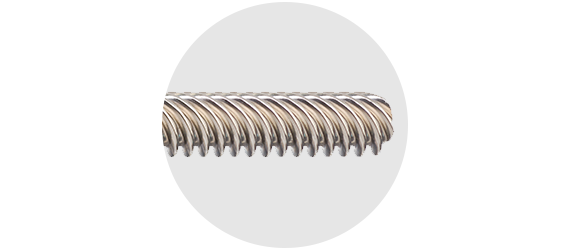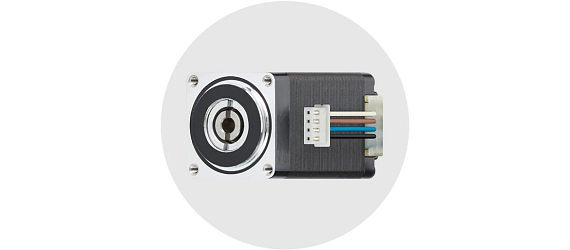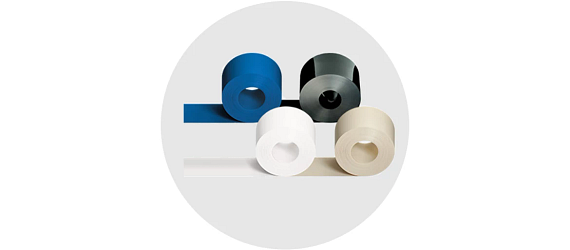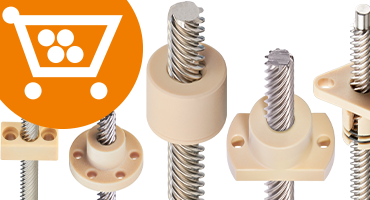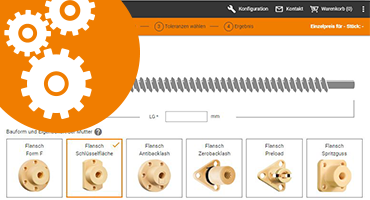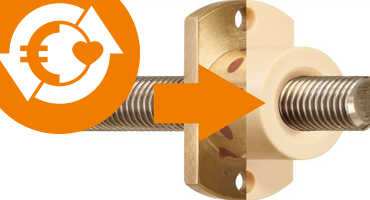Technical data:
- What was needed: A rocket module that collects space debris from orbit
- Requirements: High torque; low speed, friction and wear; fast, cost-effective production; low weight; little installation space
- Products used: dryspin® lead screws made of stainless steel, 3D printed lead screw made of iglidur® J260, NEMA 11 stepper motor, tribo-tape
- Success for the customer: Lars Flemnitz, electrical engineering student and initiator of the UB-Space project: "We tested several drive systems. Two lead screw drives used in parallel proved best here."
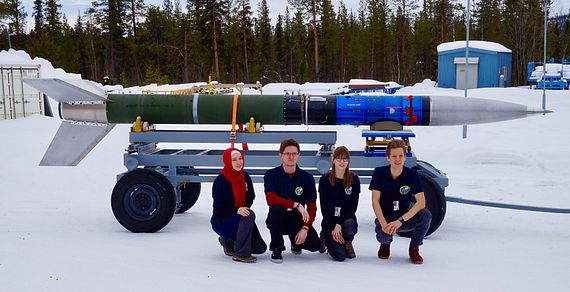
Free fall in space - with igus drive components
Students develop an experiment for the REXUS 21 sounding rocket
More than 30,000 objects orbit the Earth as space debris, posing a threat to satellites. In the UB-Space project, six students from the University of Bremen and the Bremen University of Applied Sciences are creating conditions for collecting this rubbish again. They are even sending a rocket module into space. igus drive and sliding elements will be on board.More than 1,000 satellites orbit the Earth, providing TV reception and ensuring that drivers have GPS destination signals. Since manned and unmanned space travel has been in space for decades, there are now more than 30,000 objects in orbit that are considered "space junk". They pose a threat to active satellites because the parts travel at an average speed of 25,000 km/h and would release considerable destructive energy on impact.
Task: Collect space debris
Methods of collecting and disposing of this debris are already being discussed in space exploration circles. First, however, it is important to know how the debris moves in space.This is the question that concerns the UB-Space project. Team leader Maren Hülsmann says, "Up to now, two modules could dock if they communicated with each other. But space debris consists of what are known as 'uncooperative objects' that a spacecraft must detect, approach, and grab."
This requires complex mathematical calculations - Hülsmann and her team colleague Amina Zaghdane are studying engineering mathematics - but you also need reference values or test data. And that is the task of UB-Space.
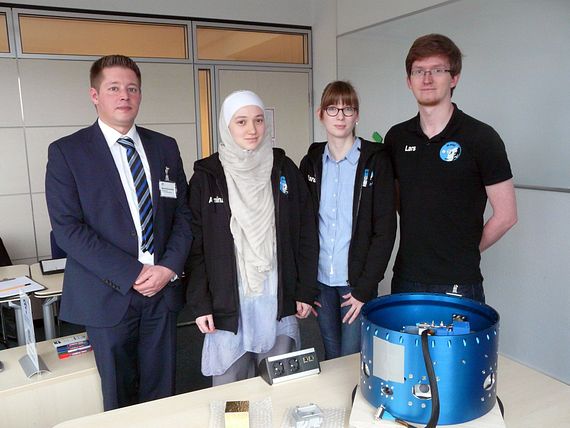
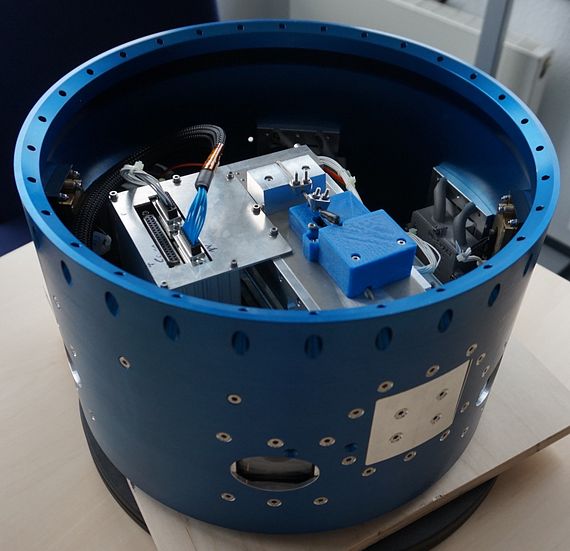
Into space with a sounding rocket
It is thanks to the German-Swedish REXUS/BEXUS program that six students are conducting a very real, elaborate space experiment. The acronym stands for "Rocket Experiments for University Students" and "Balloon Experiments for University Students". Student teams can submit research tasks to the programme. A simplified version of the proceedings is as follows: a panel of judges reviews the proposals and in each project round, four teams receive a section of a rocket in which to house their research setup. The four modules will be housed in a sounding rocket launched into space once a year from the Kiruna spaceport in northern Sweden.The UB-Space idea is for the rocket module to release a test body in the thermosphere and use sensors and several cameras to record the position and movement of this "free-falling unit". Hülsmann says, "We receive image and position data from the real movement of the FFU in space. So far, there have been only simulations of the movement of components in space."
Complex calculations are again required for experiment evaluation because each rocket rotates constantly on its own axis to compensate for imbalances.
Designing for special environmental conditions
In the twelve months leading up to the rocket launch, the project teams' schedule is very tight. At UB-Space, this is especially true for Oliver Dorn, who studies marine engineering and is designing the module's mechanics. He has to adhere to space-specific restrictions: "Energy consumption is limited due to the system, as are weight and installation space, and air friction produces temperatures of up to 200°C." Given these conditions, how do you design a propulsion system to get the test body out of the rocket? It quickly became clear that the first step would be to blow a flap off the rocket. Then a mechanism containing the free-falling unit will extend. Lars Flemnitz, electrical engineering student and initiator of the UB-Space project, says, "We tested several drive systems. Two lead screw drives used in parallel proved best here."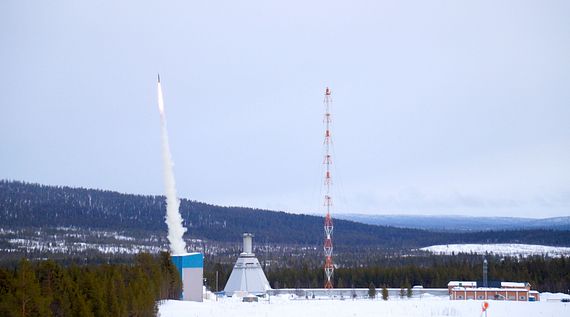
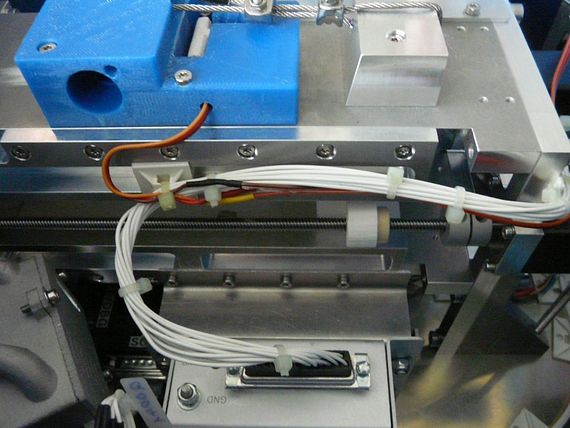
Drive and bracket from the igus product range
The lead screw drives come from the igus drylin product range. The stainless steel lead screws cover an extension path of 150 millimetres. They are driven by a NEMA 11 stepper motor that operates at high torque and low speed (3cm/s). The bracket holding the FFU is attached to a lead screw nut printed from the iglidur J260 tribo-filament. This is one of a total of six different filaments for 3D printing that igus offers. What they all have in common is that they are optimised for friction and wear, can be used to produce special parts for prototypes or small series, cost-effective and this is even with complicated geometries. UB-Space purchased other mounting components from igus too.Another barely visible but crucial component, also comes from the igus modular construction kit. Says Dorn, "The test body (FFU) rests in a receptacle lined with tribo-tape
." This iglidur liner with very low coefficients of friction is relatively new in the igus product range. It ensures that the unit slips out of the bracket and moves away from the rocket after the flap opens and the drive extends.
The effort is understandable because, after all, there is no test flight and no prototype in space travel: The experiment must succeed on the first and only flight. But the UB-Space team are optimistic and encouraged in their efforts by the professional test engineers, who are continuously supporting the project.
Of course, care has been taken to ensure that the REXUS rocket with the UB-Space experiment does not become space debris. After a parabolic flight with an apex at an altitude of 90 kilometres, taking it beyond the three layers of the atmosphere and into the thermosphere, the rocket lands back in northern Sweden. Then the evaluation of the data that UB-Space has collected along the way begins.
Elaborate tests before launch
Each of the REXUS experiments must pass the complex test and approval procedures common in commercial and scientific spaceflight according to ESA standards. Currently, for example, UB-Space's rocket module has just completed shaking and acceleration tests at 12g on three axes.The effort is understandable because, after all, there is no test flight and no prototype in space travel: The experiment must succeed on the first and only flight. But the UB-Space team are optimistic and encouraged in their efforts by the professional test engineers, who are continuously supporting the project.
Of course, care has been taken to ensure that the REXUS rocket with the UB-Space experiment does not become space debris. After a parabolic flight with an apex at an altitude of 90 kilometres, taking it beyond the three layers of the atmosphere and into the thermosphere, the rocket lands back in northern Sweden. Then the evaluation of the data that UB-Space has collected along the way begins.
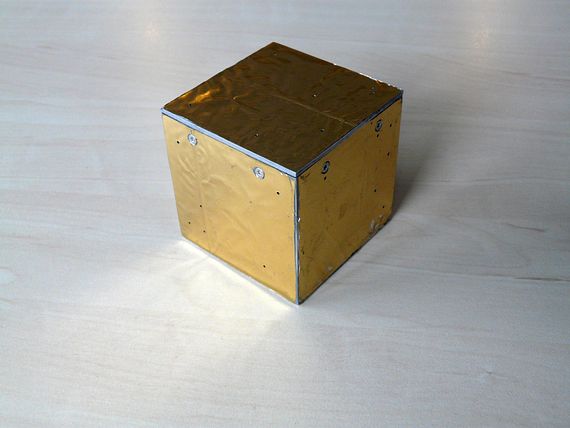
Products used
3D printed lead screw nut
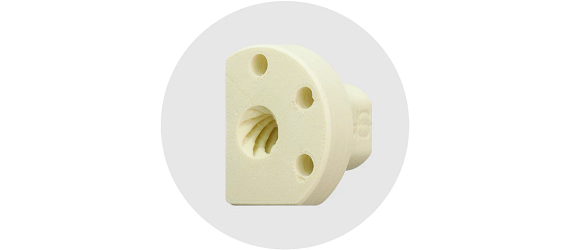
Do you have questions about drylin® lead screw technology?
Our expert Thorben Hendricks will answer all your questions about drylin lead screw technology. Just fill out the contact form, and we will take care of your issue. We look forward to your message!► Request contact online
► Make an appointment
► Expert support upon request by phone or with the video chat function
► Order a free sample
Request expert support here

